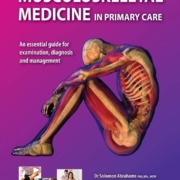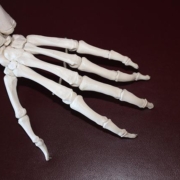Exercise and MSK Health: Finding the Right Balance
Staying active is crucial for our overall health, especially for our muscles, bones, and joints (our musculoskeletal system, or “MSK”). But how much exercise is enough? And how can we make sure we’re moving in a way that prevents injuries and supports long-term MSK health?
This article explores the delicate balance between reaping the benefits of exercise and avoiding common pitfalls that can lead to pain or injury.
The Benefits of Exercise for Your MSK System
Regular physical activity offers a wealth of benefits for your MSK health, including:
Stronger Muscles: Exercise helps build and maintain muscle mass, which is essential for supporting our joints, improving balance, and preventing falls.
Increased Bone Density: Weight-bearing exercises, like walking or dancing, can help increase bone density and reduce the risk of osteoporosis and fractures.
Improved Flexibility and Range of Motion: Stretching and various forms of exercise can improve flexibility and range of motion, making everyday activities easier and more enjoyable.
Reduced Pain and Stiffness: Exercise can help alleviate pain and stiffness associated with conditions like arthritis by reducing inflammation and improving joint lubrication.
Finding Your Exercise Sweet Spot: Tips for Injury Prevention
While exercise is vital, it’s crucial to approach it with a focus on injury prevention. Here’s how:
1. Warm Up and Cool Down:
Why it matters: Warming up prepares your muscles for activity, increasing blood flow and flexibility. Cooling down helps your body gradually return to a resting state, preventing dizziness and muscle soreness.
What to do:
Warm-up: Engage in 5-10 minutes of light cardio, like brisk walking or jumping jacks, followed by dynamic stretches that mimic the movements of your chosen activity.
Cool-down: Finish your workout with 5-10 minutes of light cardio and static stretches, holding each stretch for 15-30 seconds.
2. Gradual Progression:
Why it matters: Suddenly increasing the intensity, duration, or frequency of your workouts can overload your MSK system, leading to injuries.
What to do:
Start slow: Begin with shorter, less intense workouts and gradually increase the challenge over time.
Listen to your body: Pay attention to any pain signals and adjust your workout accordingly. Rest is just as important as activity.
3. Proper Form and Technique:
Why it matters: Incorrect form during exercise can put unnecessary stress on your joints and muscles, increasing the risk of injury.
What to do:
Seek guidance: If you’re new to exercise or a specific activity, consult with a qualified fitness professional to learn proper form.
Focus on quality over quantity: It’s better to perform fewer repetitions with correct form than many repetitions with poor form.
4. Listen to Your Body and Rest:
Why it matters: Ignoring pain signals is a recipe for disaster. Rest allows your body to recover and rebuild muscle tissue, preventing overuse injuries.
What to do:
Respect pain: Stop any activity that causes sharp or persistent pain and consult with a healthcare professional.
Prioritize rest: Incorporate rest days into your weekly routine to allow your body to recover.
Staying Active for Life
Finding the right balance between exercise and injury prevention is key to enjoying a lifetime of MSK health. Remember to warm up, progress gradually, prioritize proper form, and listen to your body’s signals.
For personalized guidance on creating an exercise plan that suits your individual needs and goals, consult with your doctor or a qualified fitness professional.









